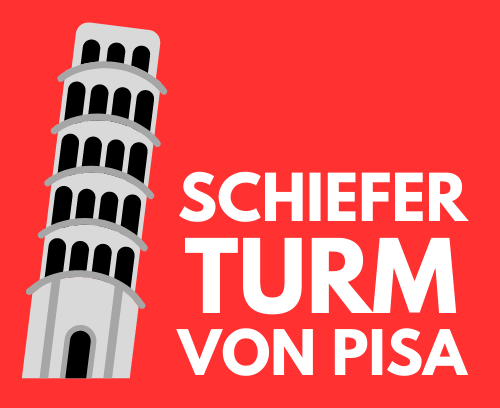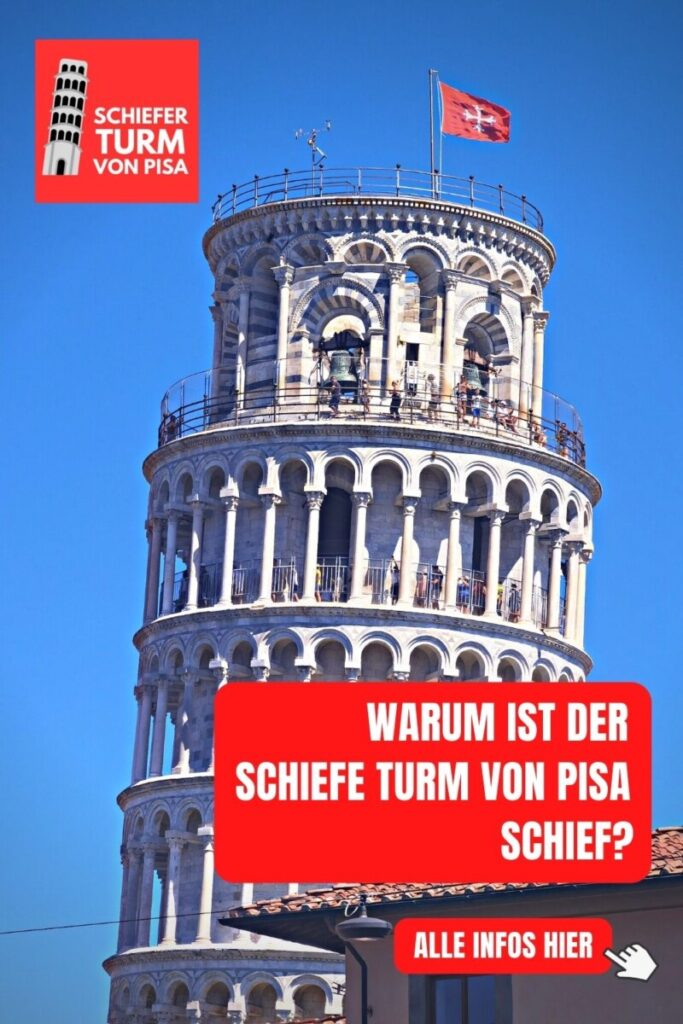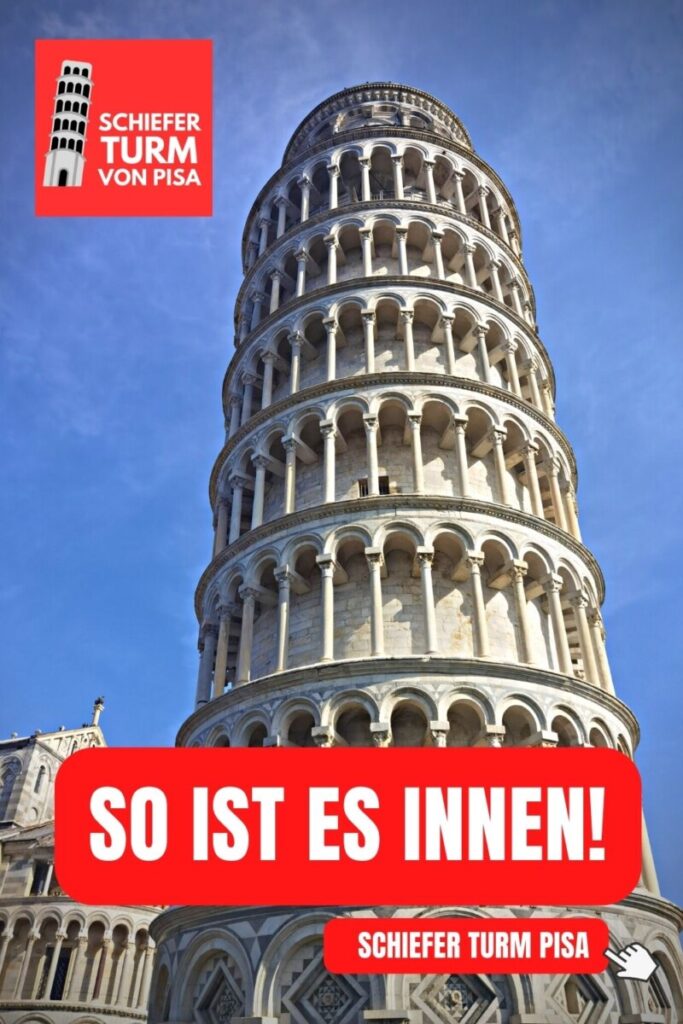The Leaning Tower of Pisa
The Leaning Tower of Pisa, also known as the Torre Pendente di Pisa in Italian, is a bell tower located in Pisa, Italy. The tower is known for its nearly four-degree lean, which is the result of an unstable foundation. The tower stands at a height of 55.86 meters (183 feet 3 inches) from the ground on the low side and 56.67 meters (185 feet 11 inches) on the high side. Its weight is estimated to be around 14,500 tonnes (16,000 short tons). The tower began to lean during construction in the 12th century due to soft ground, which could not properly support the structure’s weight. The tower’s lean worsened through the completion of construction in the 14th century. The tower is one of three structures in Pisa’s Cathedral Square, which includes the cathedral and Pisa Baptistry. The tower was constructed in three stages over a period of 199 years, with construction beginning in 1173 and ending in 1372. There has been controversy surrounding the identity of the architect of the Leaning Tower of Pisa, with some attributing the design to Guglielmo and Bonanno Pisano, while others believe it was designed by Diotisalvi.
Is the Leaning Tower of Pisa still standing?
Yes, the Leaning Tower of Pisa is still standing and remains one of the most recognizable landmarks in the world. Located in the city of Pisa, Italy, the tower is known for its characteristic lean, which has captured the imaginations of people from all over the globe. Construction of the tower began in the 12th century and continued intermittently over the course of two centuries. The tower was originally intended to be a bell tower for the nearby Cathedral of Pisa, but it quickly became clear that there was a problem: the tower was leaning. The tower’s foundation was built on soft ground that couldn’t support the weight of the tower, and it began to lean to one side during construction. Over the centuries, various attempts were made to fix the lean, but none were successful. In the 20th century, engineers began to take a more scientific approach to the problem. They dug tunnels beneath the tower and removed soil from underneath the higher side, gradually reducing the lean. The tower was closed to visitors during this time, and the work took more than a decade to complete. Extensive restoration work was carried out on the tower, which involved removing soil from underneath the foundation on the side opposite the lean, as well as installing a counterweight system. These efforts were successful, and the tower’s lean was reduced from 5.5 degrees to 3.97 degrees.
Today, the tower still leans, but it is stabilized and safe for visitors. It leans at an angle of about 4 degrees, which is enough to make it visibly crooked but not enough to be dangerous. The tower is open to visitors, who can climb to the top for a spectacular view of the surrounding area. In addition to its famous lean, the tower is also notable for its architecture. The tower is made of white marble and has eight floors, each with a bell chamber. The tower is decorated with columns, arches, and other ornate details, and it is widely considered to be a masterpiece of medieval architecture. It is visited by millions of people every year, many of whom take the opportunity to snap photos of themselves „holding up“ the tower.
What to see inside the Tower of Pisa?
The Tower of Pisa is one of the most iconic and recognizable landmarks in the world. While many people come to Pisa to take pictures with the tower from the outside, there are also many fascinating things to see inside the tower. The tower is made of white marble and stands at a height of 56 meters (185 feet) with eight floors and a spiral staircase of 296 steps. Visitors who climb the tower will have the opportunity to see the intricate architecture and design of the tower up close, as well as enjoy breathtaking views of the surrounding landscape from the top. However, before embarking on the climb, visitors will pass through a security check and must leave their bags and belongings in lockers provided for safety reasons.
As you climb the stairs, you will notice that the tower is actually leaning, which makes for a unique and thrilling experience. The lean is due to the foundation of the tower being built on unstable soil, causing the tower to gradually lean over time. The lean was so severe that the tower was closed for several years for restoration efforts to prevent it from toppling over.
Each floor of the tower has a different purpose and offers a different perspective of the surrounding area. The first floor was once used as the baptistry, while the second and third floors were used for church services. The fourth floor offers a stunning panoramic view of Pisa, while the fifth and sixth floors house the bell chamber where the tower’s seven bells reside. Finally, the seventh floor offers an up-close view of the clock mechanism and a chance to see the bells up close.
One of the most interesting features of the Tower of Pisa is its bells. The tower has seven bells, with the largest weighing over 3,620 kg (8,000 pounds). Each bell has a unique sound and is named after a saint or apostle. Visitors can see the bells up close on the fifth and sixth floors and even watch them in action during designated times when they are rung.
Overall, the Tower of Pisa is a must-see attraction for anyone visiting Italy. While the famous lean may be the main draw, the tower’s rich history, stunning architecture, and unique features make for a fascinating and unforgettable experience inside the tower. Climbing the tower is not for the faint of heart, but for those who make the climb, the view from the top is well worth the effort.
Leaning Tower of Pisa Tickets
If you’re planning to visit the Tower of Pisa, you will need to purchase a ticket. Here are some things to keep in mind:
- Types of tickets: There are different types of tickets available, depending on what you want to see. The most popular ticket is the „Leaning Tower Ticket“ which gives you access to the tower, the cathedral, the baptistery, the cemetery, and the Sinopie Museum. There is also a „Combined Ticket“ which gives you access to the cathedral, the baptistery, the cemetery, and the Sinopie Museum, but does not include the tower.
- Where to buy tickets: You can purchase tickets online in advance, or you can buy them at the ticket office on site. If you choose to buy your tickets on site, be prepared for long lines, especially during peak tourist season.
- Ticket prices: The price of tickets varies depending on the type of ticket you want and your age. The Leaning Tower of Pisa Ticket for adults costs €18, while the Combined Ticket costs €10. Children under the age of 8 are free, while those between the ages of 8 and 18 get a discounted rate.
- Reservation: It’s recommended to reserve your tickets in advance, especially during peak tourist season when tickets can sell out quickly. Reservations can be made online or by phone.
- Time slots: When you purchase your ticket, you will be assigned a time slot to climb the tower. It’s important to arrive at the tower at least 30 minutes before your assigned time slot to allow for security checks and to pick up your audio guide.
- Climbing the tower: Visitors are allowed to climb the tower in groups of 30 people at a time. The climb up the tower consists of 294 steps and takes about 30 minutes. It’s important to note that the tower leans at an angle, so the climb can be quite challenging and may not be suitable for those with mobility issues.
Overall, purchasing a ticket to visit the Leaning Tower of Pisa is a must-do if you’re planning a trip to Italy. With some advance planning, you can ensure that your visit to this iconic landmark is enjoyable and memorable.
Frequently asked questions
The Tower of Pisa is a freestanding bell tower located in Pisa, Italy. It is known for its famous lean, which was caused by an inadequate foundation.
Construction on the tower began in 1173 and continued for almost 200 years. It was completed in the mid-14th century.
The Tower of Pisa was built by the Italian architect Bonanno Pisano.
The Tower of Pisa leans because of an unstable foundation. The ground beneath the tower is soft and unstable, which caused the tower to begin leaning during its construction.
The Tower of Pisa leans at an angle of about 3.99 degrees from vertical. This means that the top of the tower is about 13 feet (4 meters) off-center.
Yes, it is safe to visit the Tower of Pisa. In fact, the tower has undergone extensive renovations to ensure its stability, including the removal of tons of soil from underneath the foundation. Visitors are not allowed to climb the tower if they are under the age of 8 or over the age of 75.
The Tower of Pisa is about 183 feet (56 meters) tall.
Yes, visitors can climb the Tower of Pisa, but they must purchase a ticket and be accompanied by a guide. The climb to the top of the tower is steep and consists of 294 steps.
Pisa is a beautiful city with many attractions in addition to the Tower of Pisa. Other popular sights include the Piazza dei Miracoli, the Cathedral of Santa Maria Assunta, and the Baptistery.
The Tower of Pisa is located in the city of Pisa, which is easily accessible by train or bus from other cities in Italy. Visitors can also fly into the Pisa International Airport, which is located just a few miles from the city center. Once in Pisa, the Tower of Pisa is a short walk from the train station or can be reached by bus or taxi.
Here it is, everything about Schiefer Turm von Pisa
Do you know the Devil´s Bridge? The Bastei Bridge ist the very famous bridge in Saxon Switzerland, Germany. The Geierlay Bridge ist a big suspension bridge in Hunsrück, Germany, Lake Braies is the most visited lake in the Dolomites, Italy.


